As much as any other neighborhood in Brooklyn, Windsor Terrace’s boundaries are rather easily defined: it’s that narrow strip, about 8 or 9 blocks at the widest, between the vast greenswards of Green-Wood Cemetery and Prospect Park. Prospect Park West (which 9th Avenue is inexplicably called here — the stretch doesn’t border the park) is its northern boundary with Fort Hamilton Parkway the southern. Originally Windsor Terrace proper extended from Vanderbilt Street south to Ft. Hamilton Parkway and was a northern extension of the town of Flatbush, but after Flatbush was annexed by Brooklyn in 1894, and Brooklyn was then consolidated with NYC in 1898, just about all the territory “between the green” is included.
The neighborhood, named for Windsor, England, was first built up by developer William Bell between 1849 and 1851 between Vanderbilt Street and Greenwood Avenue, and row houses sprang up on 16th Street and Prospect Park Southwest by 1905. Windsor Terrace was heavily Irish in the early 20th Century, and remains a quiet, relatively undiscovered neighborhood despite the construction of the Prospect Expressway from 1953-60; thankfully, a proposal to extend the expressway south along Ocean Parkway — which would have become a 6-lane expressway–was never acted upon.
Windsor Terrace begins, and Park Slope ends, at Bartel-Pritchard “Square,” on 15th Street, one of three traffic circles, or roundabouts as they say in England, surrounding Prospect Park. The square was named for Emil Bartel and William Pritchard, two young Brooklyn natives who were killed in combat in World War I. Its most striking feature, perhaps, is the curved contours of the brick buildings surrounding it.
The 9-screen Pavilion opened in 1996, when I saw Independence Day there (“now that’s what I call a close encounter” says Will Smith’s character). However, the building is much older: This theatre dates back to 1908, when the brothers Harry & Rudolph Sanders opened a nickelodeon called the Marathon on the site. Rapidly expanding into adjacent storefronts, the Marathon developed into a theatre of 500 seats. In 1928, the owners replaced the Marathon with the entirely new and self-named Sanders Theatre, tripling their seating capacity to 1,581.
When the Sanders finally closed in 1978, plans to convert it into retail or residential space never bore fruit. In 1993, exhibitor Norman Adie and three local investors bought the property. In 1996, they re-opened it as the Pavilion Theatre with three screens. Five more have been added since. cinematreasures
Some say that Windsor Terrace begins at Farrell’s, the venerable (1933) institution at Prospect Park West and 16th Street, where, despite the neon sign, there hasn’t been a grill for years, though you can get corned beef sandwiches on St. Patrick’s Day. There’s no table service at all–you drink at the bar. If you were female, you didn’t drink at the bar until 1972, when Shirley MacLaine swept in with her then-boyfriend, Park Slope’s Pete Hamill, and demanded service, ending the outdated tradition.
Holy Name of Jesus Church, Prospect Park West and Prospect Avenue
The parish led the unsuccessful effort to prevent or reroute the Prospect Expressway in the 1950s.
Green-Wood Cemetery entrance, Prospect Park West and 20th Street. This entrance is not always open.
McDonald (formerly Gravesend) Avenue begins its lengthy journey to Coney Island at 10th Avenue and 20th Street, a corner distinguished by the Bishop Ford Central Catholic High School radio tower.
The high school was opened in 1962 and remembers Father Francis X. Ford, a missionary killed in China in 1953. The school itself incorporates a rough pagoda design.
Our building, located in the Park Slope area at 500 19th Street, occupies the site of the old Brooklyn trolley barns, on which, during the Civil War, stood a Federal prison. bishopfordhs.org
Prospect Expressway, built between 1953 and 1960, runs between the Gowanus Expressway and Church Avenue, where it ends rather abruptly at Ocean Parkway. The original parkway was completed between 1874 and 1880 and was designed by Prospect and Central Park masterminds Frederick Olmsted and Calvert Vaux. The parkway serves as a service road for the Prospect Expressway from Park Circle to Church Avenue; it’s doubtful that Calvert and Vaux’ work would be so compromised were the expressway to be built today.
Fencing has been installed at the 10th Avenue pedestrian crossover, to prevent anyone from throwing objects onto traffic. Seen from here, it reveals an interesting pattern.
Most street maps show Prospect Avenue intersecting with Seeley Street, but it never has.
The glacial moraine running through mid-Brooklyn produces some steep hills. When Prospect Avenue and Seeley Street were laid out through the area many decades ago it was considered prudent to bridge Seeley over Prospect. Such traffic bridges occur more frequently in the Bronx, which has some steep scarps, but are quite rare in Brooklyn.
Vanderbilt Street, named for mid18th-Century Flatbush jurist John Vanderbilt, contains some examples of Windsor Terrace’s unusual building types (see Greenwood Avenue below for more striking examples).
Vanderbilt Street also marks the dividing line between Brooklyn’s two most extensive street numbering systems, the western Brooklyn system that runs from Park Slope to Bay Ridge (1-101) and the East streets that dominate southern and eastern Brooklyn (East 1-East 108th).
A block south of Vanderbilt, Greenwood Avenue (named for the cemetery but without the hyphen) contains unsual examples of 19th Century architecture that may go all the way back to the neighborhood’s beginnings, including the rustic Church of the Holy Apostles.
More unusual houses, East 5th Street facing the expressway.
The Romanesque Revival Engine Co. 240 was built at 1309 Prospect Avenue in 1896. It contains a lookout tower dating to the era that preceded fire alarms.
Fort Hamilton Parkway, despite its name, is a major truck route as it pierces the strict grid in Borough Park, Dyker Heights and Bay Ridge. Between Ocean Parkway and Green-Wood Cemetery it’s lined with several fine brick apartment buildings.
Kermit Place, a narrow lane between Ocean Parkway and Coney Island Avenue north of Caton Avenue, was named before the suicide of Theodore Roosevelt’s son Kermit in 1943, but perhaps it had been influenced by the renaming of Avenue Q for his brother, Quentin Roosevelt, who died on a flying mission in World War I. Maps show Kermit Place’s former name as Henry Street.
The Calvary Cathedral of Praise, Caton Place and East 8th Street, is a new state of the art house of worship. Top names in gospel music, including CeCe Winans, have appeared there.
Are those people on horseback there?
Kensington Stables, Caton Place and East 8th Street, is the last remaining Prospect Park stable, serving its bridle path, and is one of the last two stables remaining in Brooklyn (the other one is the Jamaica Bay Riding Academy on Shore Parkway east of Flatbush Avenue). The barn goes back to 1930.
Kensington Stables, at Caton Place and East Eighth Street, is the last stable remaining at an intersection that was once home to several such enterprises. In their heyday, at the beginning of the 20th century, hundreds of horses were stabled there. But the Depression and the automobile transformed horseback riding from a necessity into a hobby, one soon overtaken by other leisure activities.
No one remembers exactly when the changes started to take place — around the 1930’s or 40’s, old-timers suggest. The first stable to disappear was converted into a roller-skating rink, which later became a warehouse. The second was converted into a bowling alley, which later gave way to a giant church, the Calvary Cathedral of Praise. A third stable, known as the Little Gray Barn, was torn down [in 2003] and is being replaced by condominiums. village voice


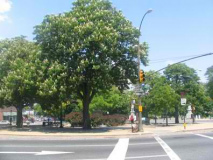
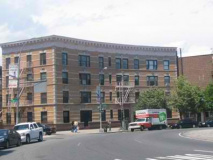
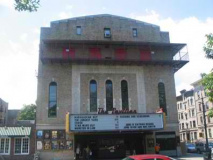
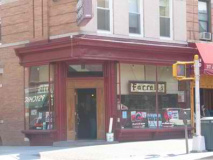

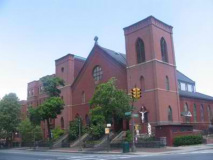
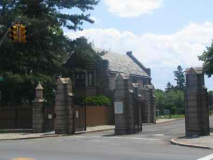
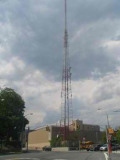

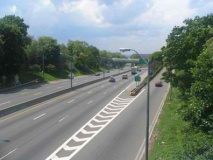
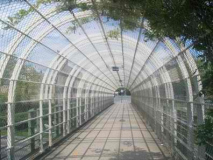
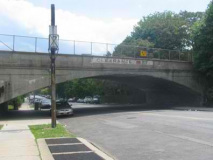
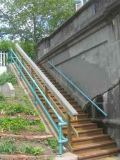
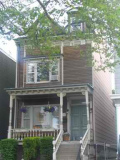
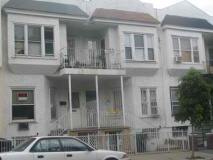
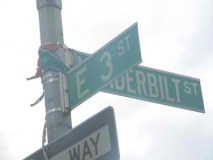
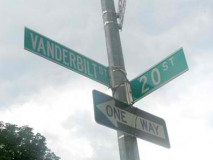
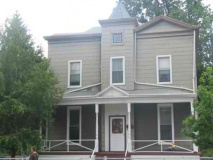
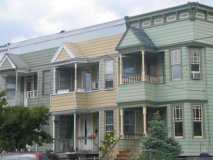
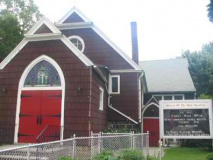
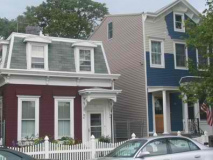
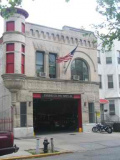
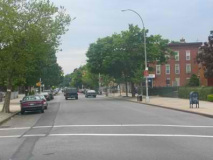

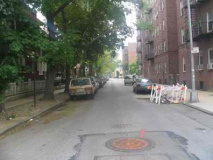
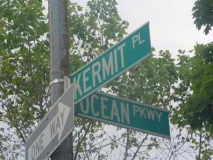
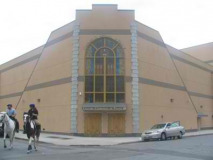
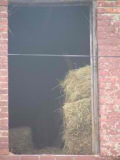
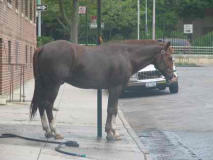
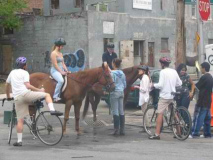
21 comments
There seems to still be some confusion as to the boundaries of Windsor Terrace and Park Slope. My Mother was born on Prospect Avenue between 9th and 8th Avenues (you are correct-locals stop the name Prospect Park West at the Circle, or Bartell-Pritchard Square). She always stated that she grew up saying she was from Holy Name Parish in Park Slope. I have since found quite a few older maps of the area that have Park Slope continuing it’s run along Prospect Park West, all the way to Green-wood Cemetery. You even quoted Bishop Ford CCHS stating that it is in Park Slope! I would say the main confusion is because you are literally on the Border. Windsor-Terrace’s Western border would be Prospect Park West, it’s Northern border would be Prospect Park South West. it’s Southern border would be Green-wood Cemetery (20th St, into McDonald Avenue), and finally, it’s Eastern border would be Fort Hamilton Parkway. The same confusion exists for the border between Windsor Terrace and Kensington. The Prospect Expressway slices an area of homes that is only approximately 5 blocks square. They are above Fort Hamilton Pkway and the Cemetery, so technically they should be Windsor Terrace. For years the local realtors insisted they were part of Kensington, but they insisted they were part of Windsor Terrace. Well, the Archdiocese of New York has put that argument to bed. They announced that they will merge the Catholic Diocesan Schools of Immaculate Heart of Mary and Holy Name, stating that they are from the same “neighborhood”.
If you send me an email address, I would be happy to provide the one map I have scanned.
Thank you for a very educational, interesting and entertaining website.
from scotland. hi, i wonder if you can help me with some info. i am trying to trace my grandfathers livery stabe in the prospect park area,in an old document it states livery stable keeper as occupation, address 287/291 prospect , but the abrvration after prospct is blurred and i dont know if it is pk.or, pl.this was in 1917, i would appreciate any help, thank you ..yours ed casey
I’m no expert, but I think it is very likely that your grandfather lived on Prospect Avenue.
Today, 287-291 Prospect Ave. is considered a single large lot by the city. It has a large apartment building on it now, built in the 1990’s. Prior to that, it had a two story building which looks like it could have originally been a stable. There is a certificate of occupancy from 1929 showing it being used as a parking garage for cars. It was owned by a “Louis Sorkin” at that time.
http://www.propertyshark.com/mason/Property-Report/?propkey=144701
http://nycma.lunaimaging.com/luna/servlet/detail/RECORDSPHOTOUNITBRK~1~1~251610~123547:dof_3_01053_0070?sort=Identifier%2CBorough%2CBlock%2CLot&qvq=q:287%2Bprospect;sort:Identifier%2CBorough%2CBlock%2CLot;lc:RECORDSPHOTOUNITBRK~1~1&mi=1&trs=3
http://a810-bisweb.nyc.gov/bisweb/PropertyProfileOverviewServlet?boro=3&houseno=287&street=prospect+ave&go2=+GO+&requestid=0&t10=y
http://www.nytimes.com/1998/11/13/nyregion/residential-real-estate-middle-income-tenants-in-park-slope-addition.html
287, 289, and 291 Prospect Place are individual lots, each with a 3 or 4 story rowhouse on it, built around 1905. There are no stables or garages attached to these houses.
287 and 289 Prospect Park West are individual lots with building built in the 1920s or 1930s. It’s conceivable that there could have been stables there in 1917, but the problem is that there is no such address as 291 Prospect Park West. The highest numbered address on the street is number 289.
There is no 287 or 291 Prospect Park Southwest. The highest address on that street is #210.
There is no 287 or 291 Prospect Street. And anyway Prospect Street is nowhere near the park.
Robert is now 80. I lived at 296 Prospect Ave.between 5th and 6th avenue from 1935 to 1942. The even side address buildings were removed for the Prospect Ave. Expressway.The two story building mentioned was a Sinclair gas station and indoor parking garage. To the left of the garage is still a church. Further down is the famous Prospect Hall.
Hello Ed,
I stumbled upon this page, and it just so happens that I grew up behind 287 Prospect Ave. in Brooklyn. When I was young, my mother used to talk about the stables around the corner and how her cousin was a stable boy there when she was a kid. There were also some small wood stables behind Prospect Hall catering hall (down the block from 287). When I was young we used to play in the old stables and look for treasures.
This whole side of the So. Slope neighborhood was loaded with stables all the way up to Windsor Terrace where the old Coney Island Plank Road Omnibus stables were (now Bishop Ford H.S.).
My Grandfather always said that many of the smaller homes on 16th St. (behind Prospect ave) and 17th St. were built for livery workers. The area also had many poorer folk from Ireland. My mom’s family was from Co. Wexford in Ireland.
I’d bet your Grand Dad was from Prospect Ave. based on this info and the investigative work done by DC.
Good luck with your research,
Andrew
My dad grew up on Prospect Ave between 8th and 9th. He said there was a stable on 9th Ave near McGoverns florist. he also said there had been a fire at some point when he was young (born in 1916). The stable was later converted to a trolly barn. Hope tthis helps. The area was settled by the Irish.
Steph
A few of my friends who grew up in Windsor Terrace are trying to find out what was located on the corner of PPW and Prospect Avenue between the years 1938 – 1968. Any historic photos? or knowledge?
In 1968 we are aware of a cleaners afterwards Joe’s Pizzeria which still remains.
Across from Holy Name Church was a Bakery. Across from Joes Pizzeria was a Hardware. Joe’s Pizzeria was originally a great Italian store selling all kinds of cheese, Bacala, barrells of olives and pickels. Down Prospect Av. from the Bakery was Moe’s candy store. At this time 1944-1952 i lived at 455a Prospect Ave, between 8th and 9th Ave.
You are right about that. It was Joes grocery store. I lived on Prospect Park West during that same period. We must be the same age and lived a half block away! We used to go to the candy store in Prospect Avenue to
Buy egg Creams and fudge suckers!
I grew up in the apartments on prospect ave between 8th and 9th and later my parents
bought a house on the corner of 16th
street and 11th Ave. I went to Holy Name
and the candy store you mention here was
‘Al’s’ prospect ave off 9th Ave. Went there
all the time for penny candy and chocolate
egg creams! They also made coke with
syrup and seltzer. I also remember ‘Henry’s German Deli 9th and prospect across from
joe’s pizzeria. As a teenager we all hung
out at the holy name school yard!
I’m from Windsor Terrace and have always considered the borders to be Green-Wood Cemetery, Caton Avenue, Prospect Park, and 8th Avenue. I’ve even seen other websites that included these as the borders.
In 1958 there was a grocery store/ superette on the corner of prospect ave and 9th ave which is now a pizzeria,and catty corner from holy name church there was in 1958 a hardware store and on prospect right off ninth (prospect park west) there was a small luncheonette called Moe nd Al’s .
Kacy, do you have any pictures or anything from that luncheonette, Moe and Al’s? The Al in Moe and Al’s is my grandfather, he is 93 years young and living in Sheepshead Bay, I would love to surprise hime with some memorabilia from the old days when he had the luncheonette.
I grew up at 462 Prospect Ave., a row of 7 apartment bldgs. Each having 8 apartments. On the corners of 9th Ave & Prospect Ave was the Church, a small grocery, hardware,and another store I can’t seem to remember, I think it may have changed hans a few times. On Prospect Ave., just down from the hardware store, was a hobbie shop, where a bunch of us kids hung out. Directly across from there on prospect was a small candy store (we used to spend all our allowances there on penny candies. There was another cany store on 9th street , next to the McFaddens Post (spell?) and befor the bar on the corner of 17th St. I graduated Holy Name in 1961 (the year you could turn upside down and it remains the same). We used to go to Prospect Hall for Christmas parties. Summer nights we used to go to 9th Ave. for Italian ices & custard ice cream, Bonalles (spell). I can go on and on, but I don’ t have the time right now. It was a great time of life.
Oh,one thing I forgot, the horse stables where near the bowling alley, park side, off Coney Island Ave. I don’t remember any signs of horse stables onProspect Ave.
Yes, Farrell’s, that venerable institution… where you can still get racist and homophobic slurs spewed in your direction for just walking down the sidewalk. The one time I actually went in there, they didn’t refuse service to my Jewish friend, so maybe they’ve almost progressed to the 1950s.
Tyler!! Who are you…I have always lived (and will never leave)in Windsor Terrace and the only time I hear “racist and homophobic slurs” or any talk “spewed” is from someone (like you) who is not from the neighborhood and wants to sound as if they are better than those who have been here…We could ignore your comment but you obviously weren’t aware of the site or any of the comments before yours…you couldn’t possibly have any of the roots or sentiments that the rest of us have with our “hometown” or with any place..one giveaway is “the one time” that you actually went in Farrell’s. You don’t have to have ever set foot in Farrell’s to know the respect that the neighborhood has for this “venerable institution”… and that Farrell’s has for all… hope to you is that someday, somewhere you will be welcomed …and become a neighbor
I grew up here and have absolutely heard racist slurs plenty of times from the drunken jerks who hang out outside Farrell’s often with beers in hand. I don’t know what hole you’ve been living in Bonnie, but racism is alive and well in Windsor Terrace unfortunately
Poor widdle millennials! Anyone from the neighborhood could tell you that the gauntlet of guys with beers has a purpose: to make offended little jerks like you Man Up!
The pic of the house on Vanderbilt st and 20st is my house ,,, my mom and dad sold it around 1972 to move to Florida , and I also lived next to the firehouse on prospect Ave , I live with my ant at 1311
Happy Easter, Greetings..I am trying to locate, I believe, off the Prospect Park Expressway, and alongside Greenwood Cemetary, a sectioned off area with a Mother Mary Statue. I do not recall if it’s a culdesac location? My friend Debbie Kobus, a 911 Angel, stopped off frequently to pray to Mother Mary. I don’t drive, but would appreciate some help with location and directions. Much appreciated. Peace. Viki